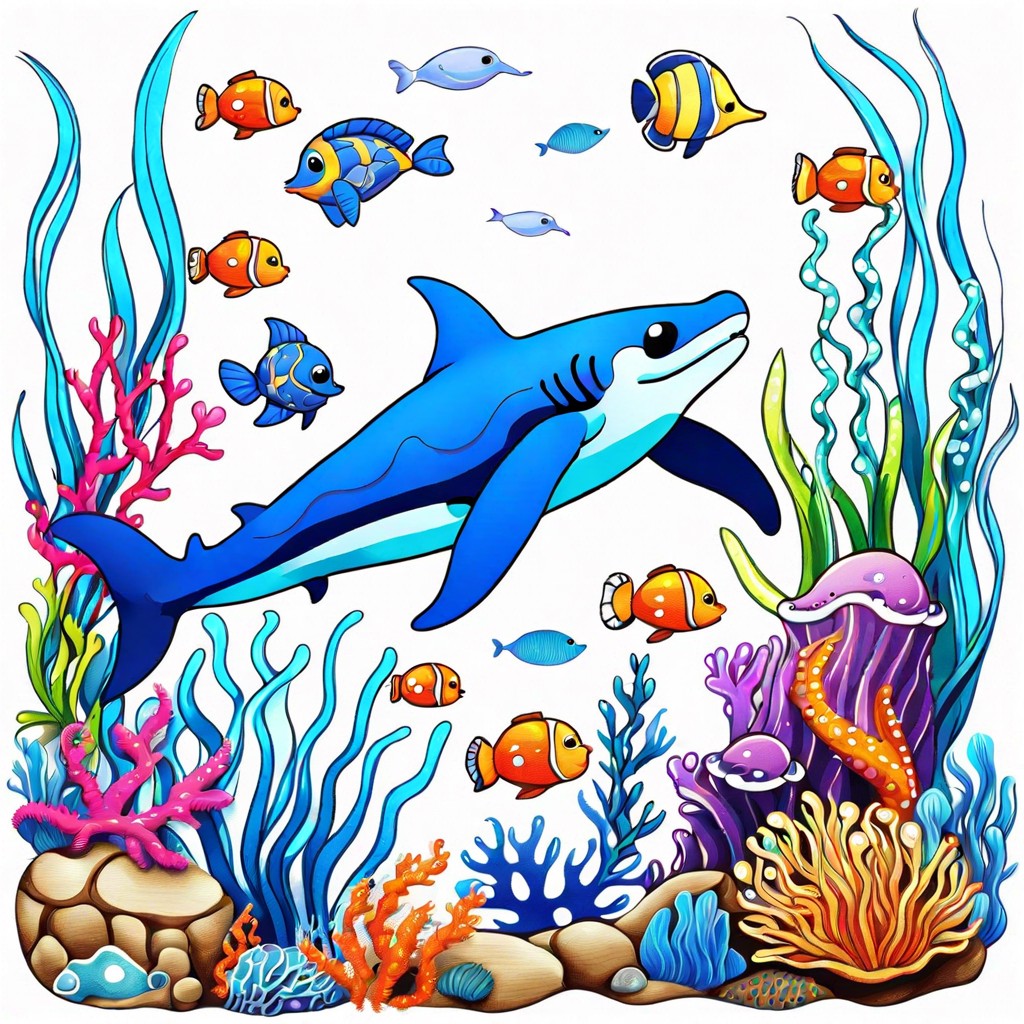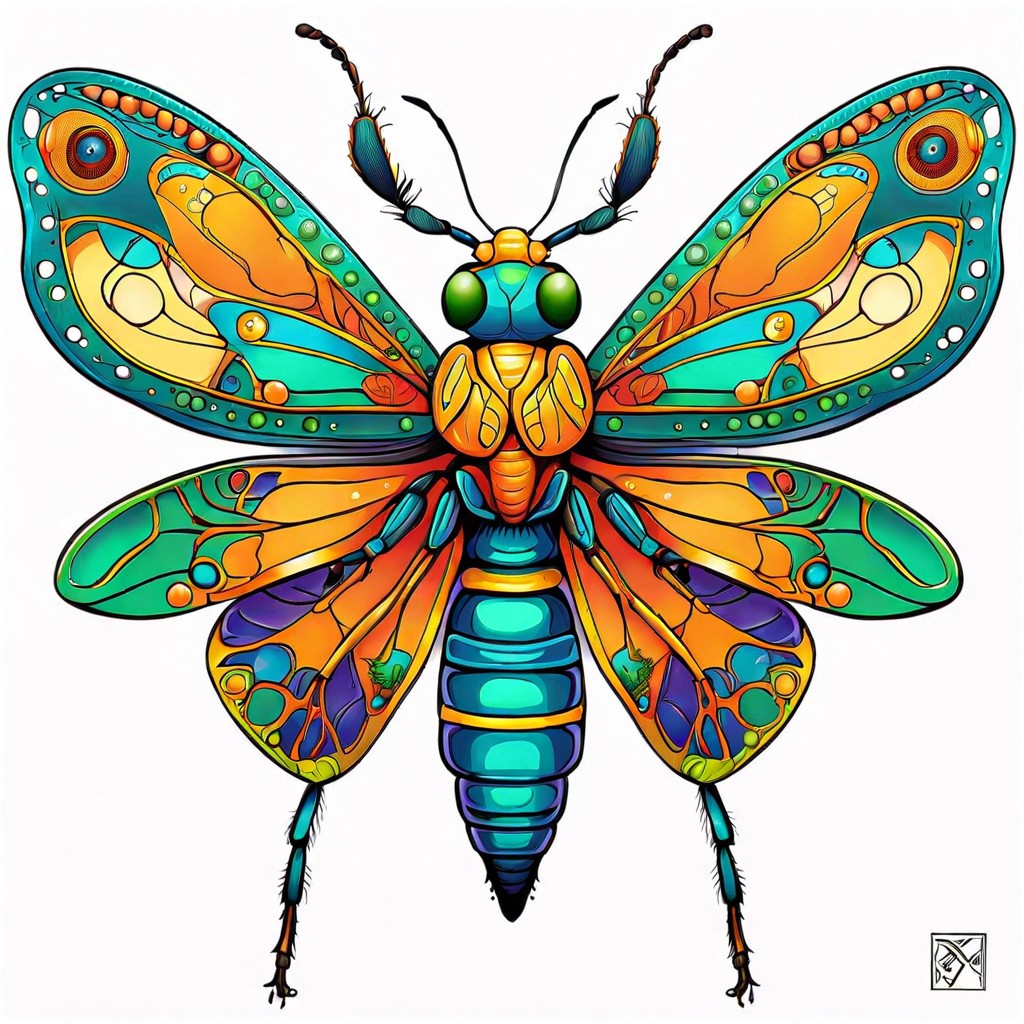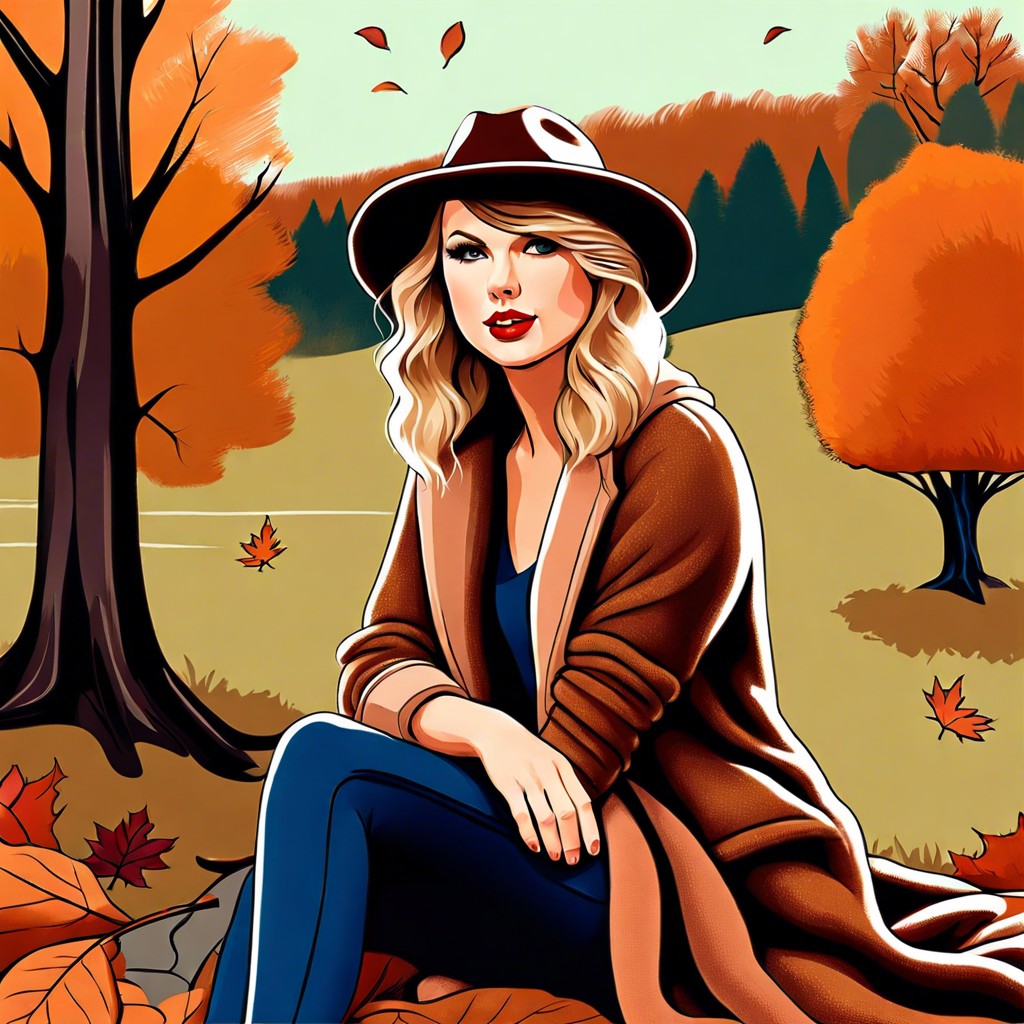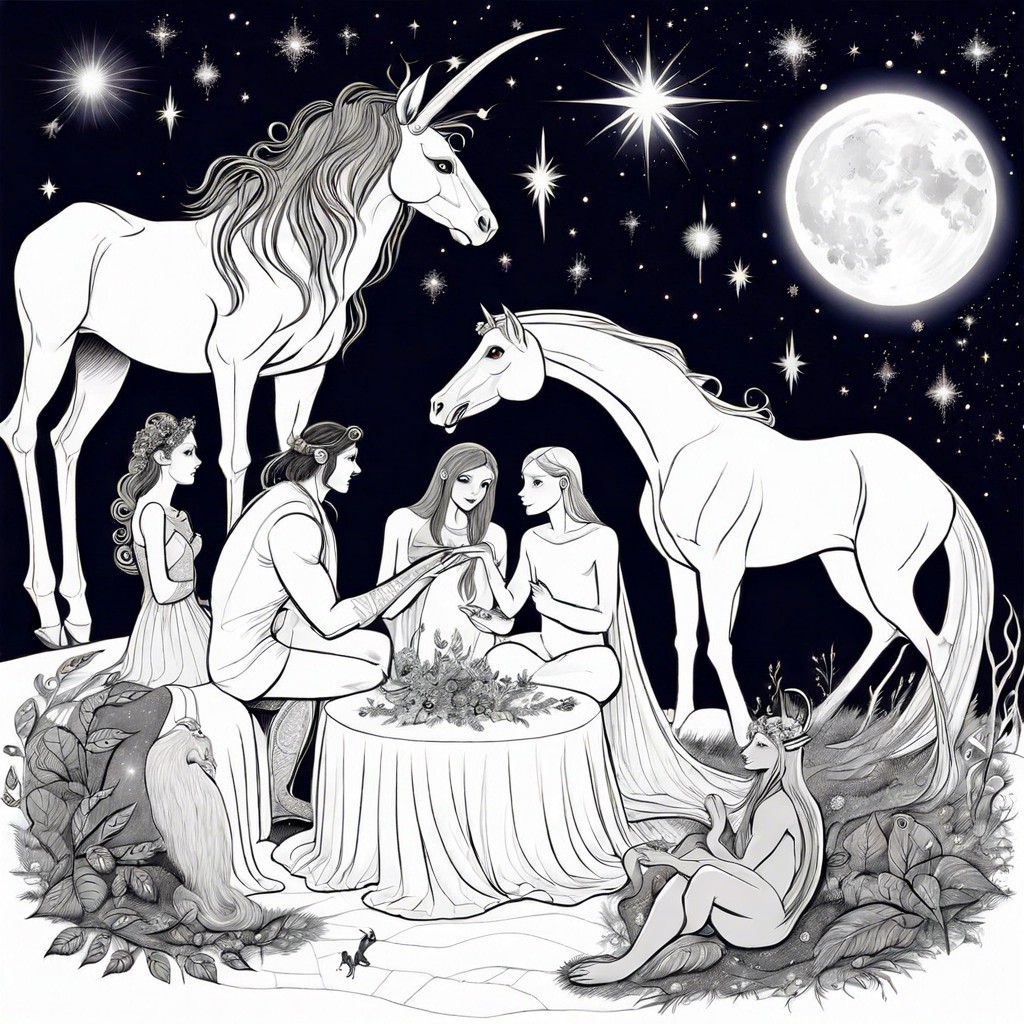Discover techniques for drawing hair with this guide on crafting realistic textures and styles.
Sketch Flowy Lines to Simulate Wind-blown Strands
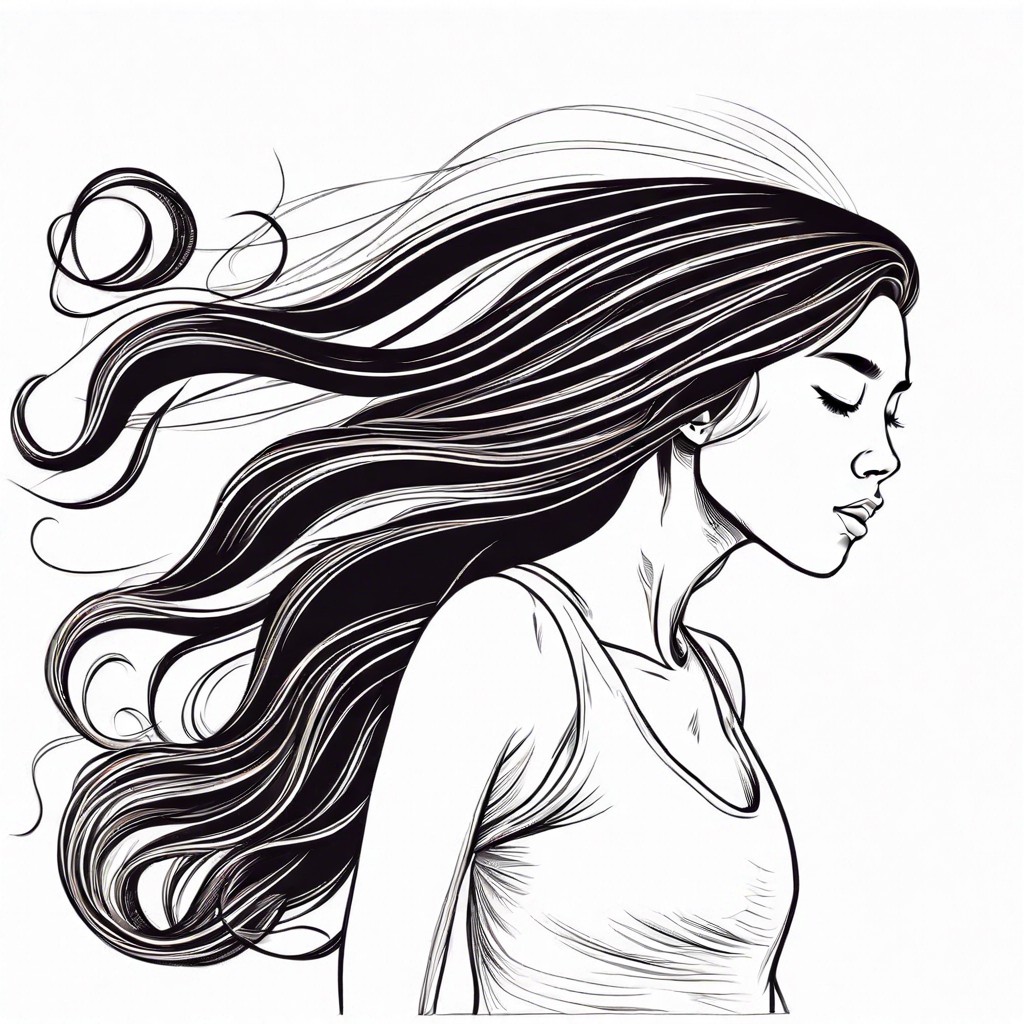
Capture the hair’s movement by drawing gentle, curved lines that mimic the natural flow of strands caught in a breeze. Allow some lines to lift off from the head, suggesting the gusts of wind that play with the hair. Vary line thickness to convey a sense of depth and the whimsical dance of tresses in the wind.
Use Hatching Techniques for Textured, Layered Looks

Hatching involves drawing parallel lines close together to build up tones and texture. This method mimics the layers of hair, giving depth and realism to your drawing. Adjust the spacing and angle of your lines to indicate the way hair falls and turns.
Practice Drawing Tight Curls With Spiraled Doodles
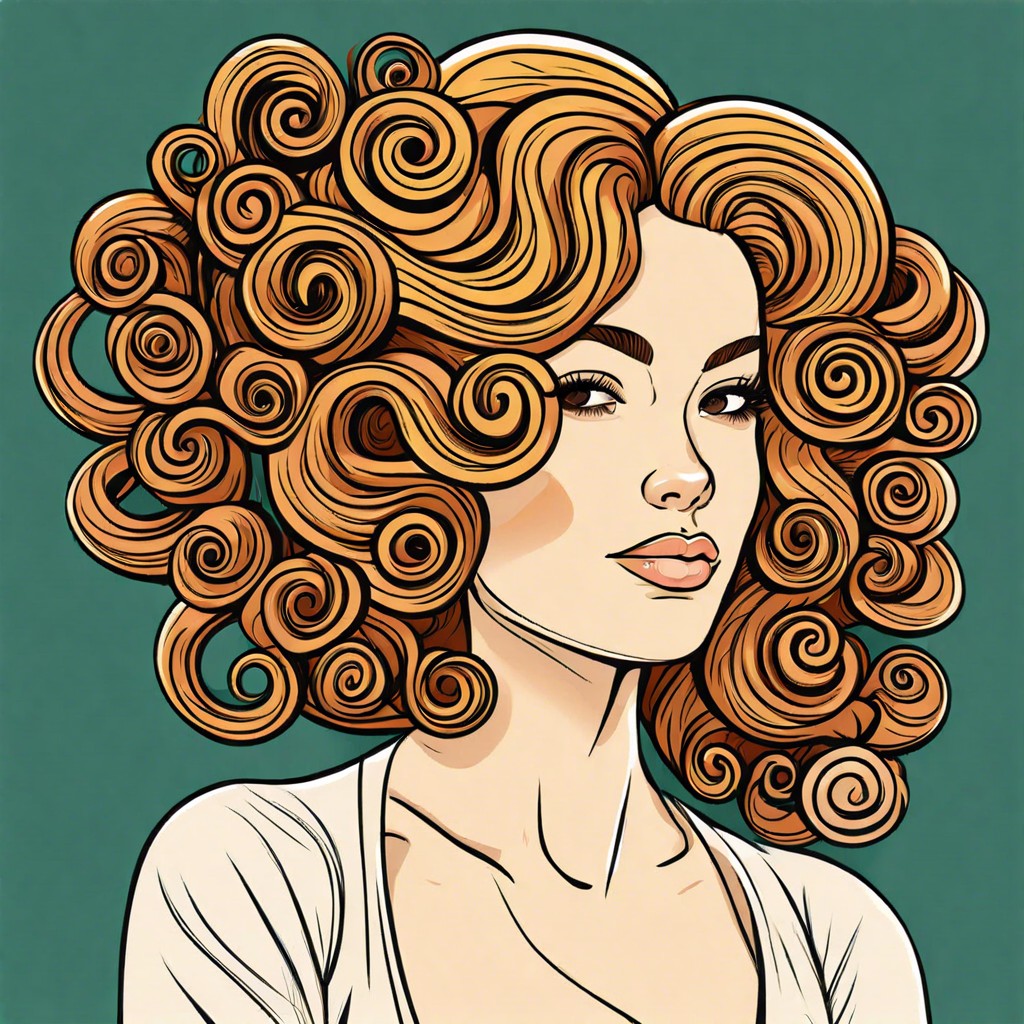
Tight curls add a playful depth to your character’s hair, simulating buoyancy and volume. Begin with small, concentric circles that build into larger spirals for a realistic curly texture. Practice varying the tightness and spacing of these spirals to reflect different curl patterns and styles.
Illustrate Hair With Abstract Shapes for a Modern Twist

Incorporate geometric designs into the strands to break from traditional depiction. This approach infuses a vivid, unconventional personality into character illustrations. Envision the hair as a collection of shapes, adding a lively, avant-garde dimension to your artwork.
Create a Hair Ombre Effect With Gradient Shading

An ombre technique delivers a natural progression from light to dark. This method adds depth, making the hair seem more lifelike. By gradually shifting tones, you simulate real hair’s reflective qualities.
Draw Geometric Patterns Within Hair for Stylized Characters

Incorporate triangles, circles, and polygons to infuse a futuristic or avant-garde edge into the character’s hair. This method highlights personality and adds a distinctive flair, setting your character apart. By weaving these shapes into hair designs, you introduce an artistic signature to your work.
Use Pointillism Dots to Build Volume and Depth
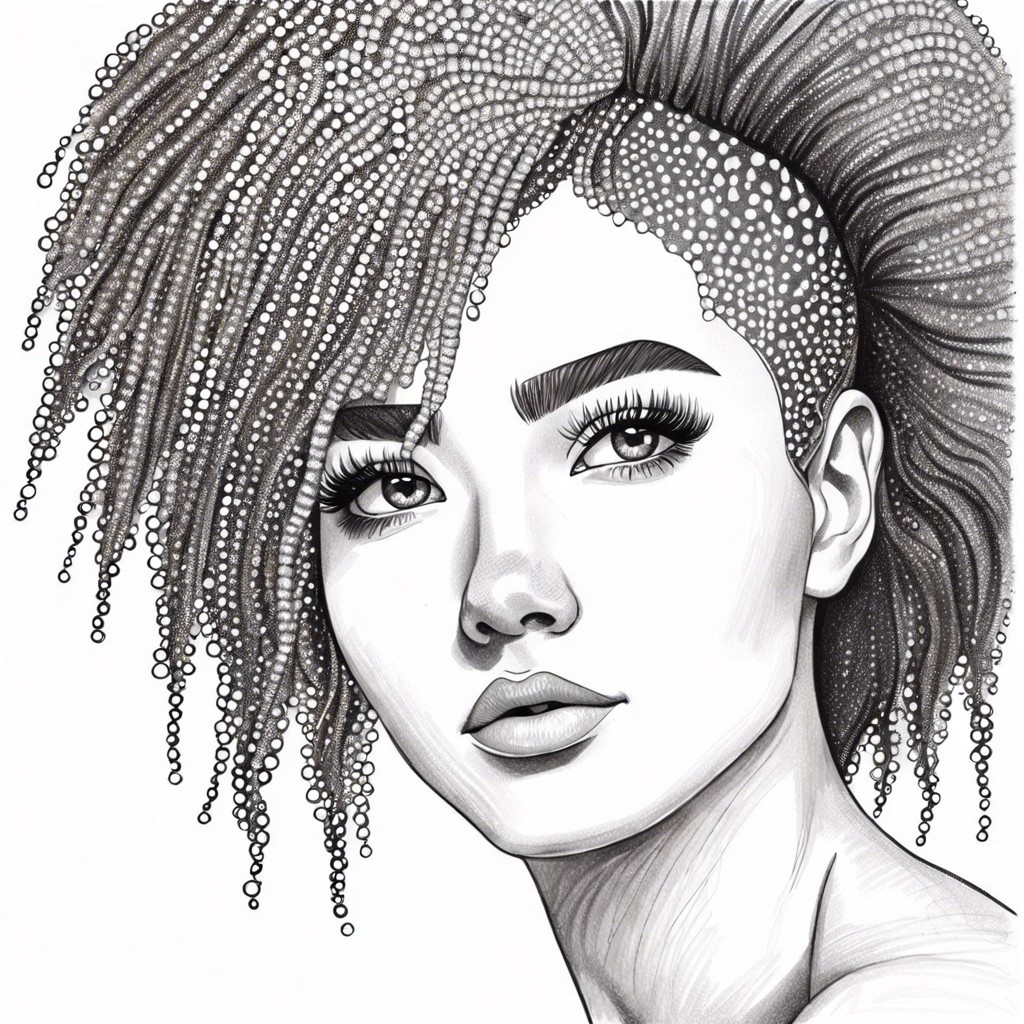
Pointillism adds a three-dimensional quality to hair drawings by varying the density of dots. Lighter areas achieve highlights, while clusters of dots create shadowed sections. This technique gives the illusion of individual strands and overall depth.
Try Out Cross-contour Lines to Show Hair Wrapping the Head

Cross-contour lines follow the form of the scalp, mapping out the direction in which the hair grows and falls. This method infuses your drawing with a sense of three-dimensionality, making the locks appear to naturally hug the head’s shape. It’s a powerful technique to convey volume and the way strands twist and turn in space.
Implement a Splash Effect With Ink for Dynamic Hair Movement
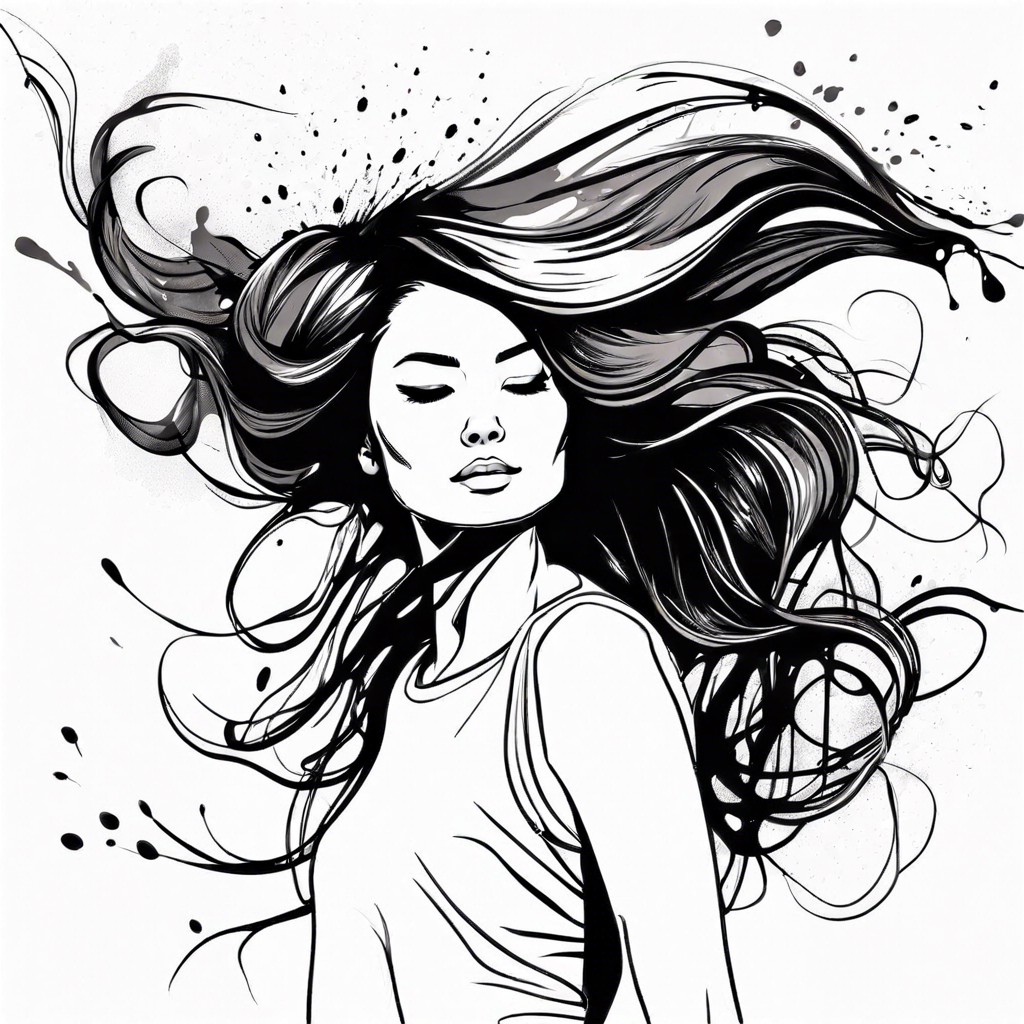
Visualize the energetic flow of hair as it interacts with an unseen breeze. Depict this motion with splatters and drips, suggesting a spontaneous burst of movement. This technique breathes life into the drawing, making it leap off the page with a tangible zest.
Integrate Flower or Leaf Designs Subtly Into Hair
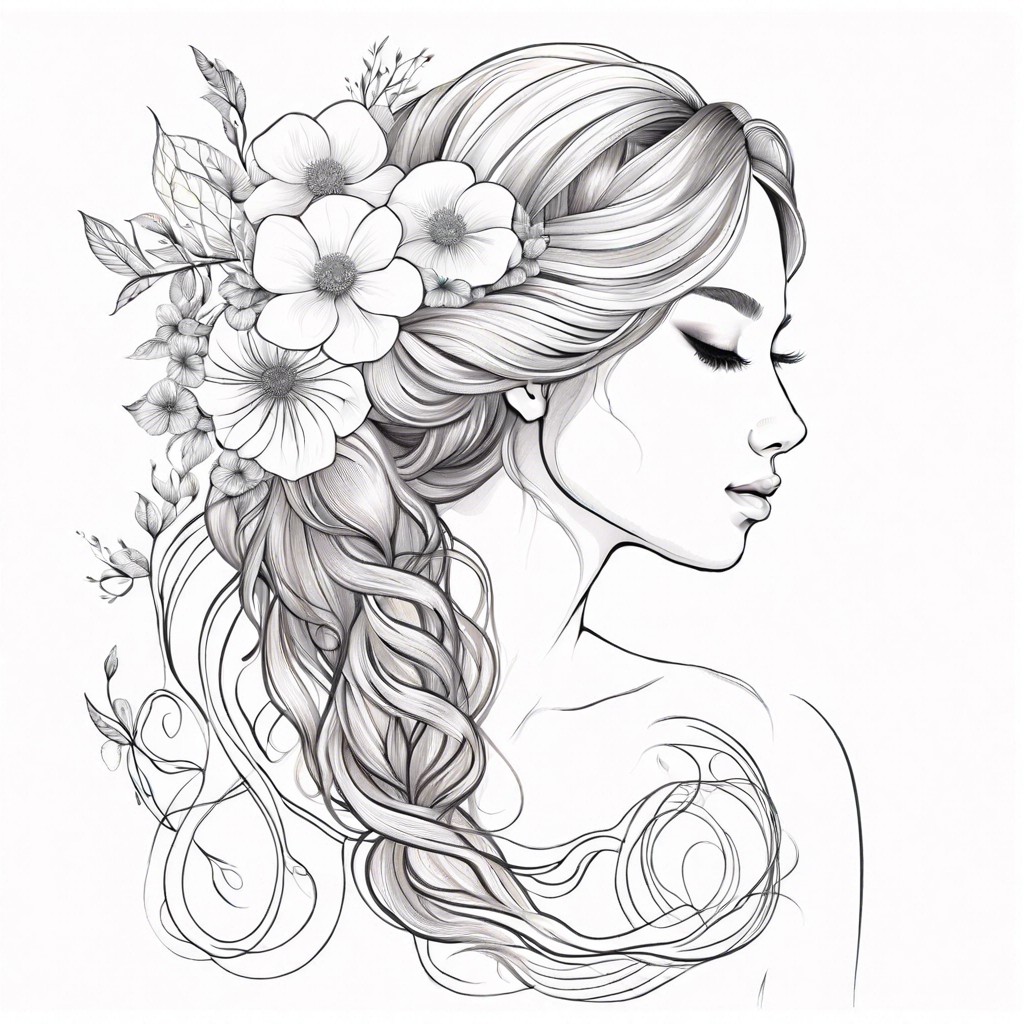
Incorporate floral motifs to add a natural essence to your hair drawings. Weave leaves and blossoms into the tresses, blending them seamlessly for an organic appeal. This approach brings a whimsical touch, marrying nature with the flowing locks.
Draw Hair As Flame-like Wisps for an Energetic Vibe

Capturing the essence of fire in your hair drawings can infuse your work with energy and life. The dynamic curves and sharp ends mimic the flicker and dance of flames. Penciling in these vibrant tendrils can make your subjects seem ablaze with motion and vitality.
Use Thick, Bold Lines for a Chunky, Stylized Mane
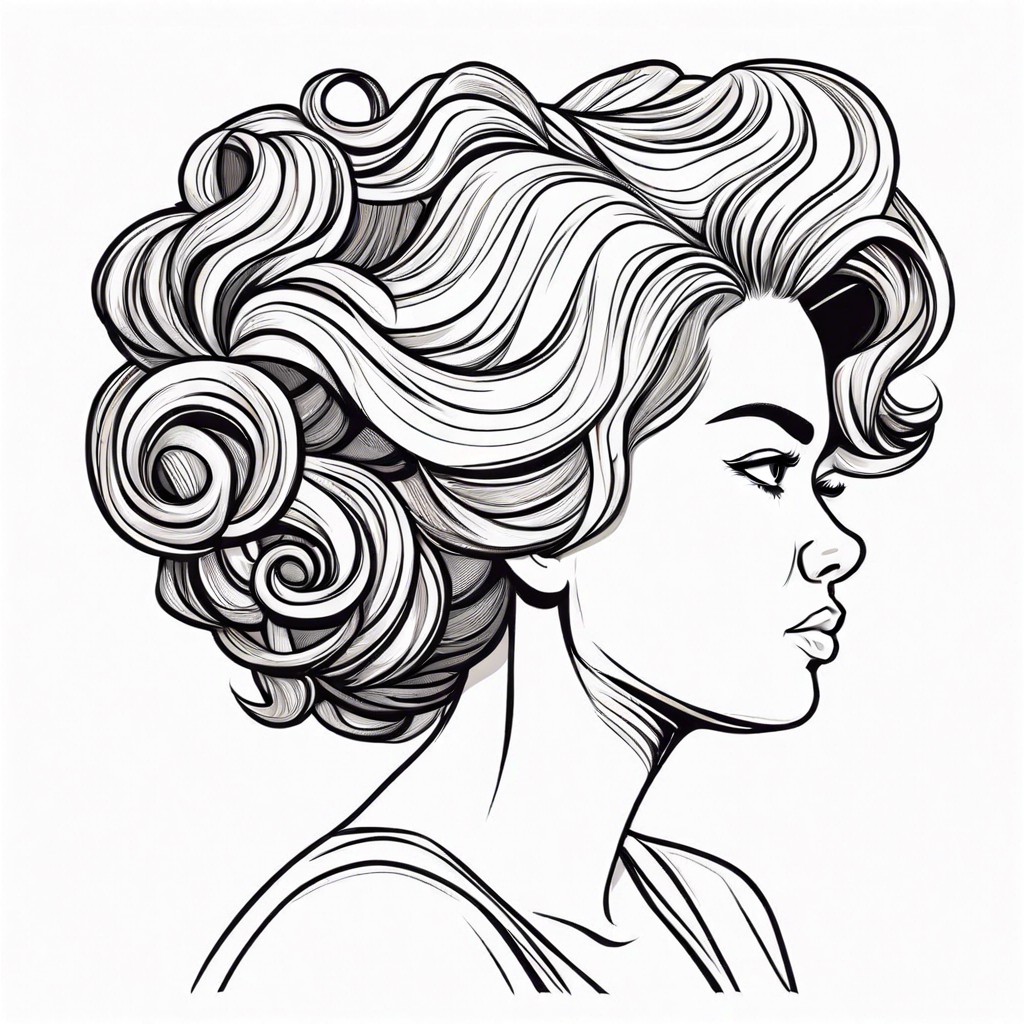
Thick, bold strokes carve out a formidable presence, giving the hair a sense of weight and texture. This approach adds a dramatic flair, perfect for characters requiring a strong visual impact. It simplifies details, focusing on the overall shape and movement.
Sketch a Silhouette With a Detailed Hair Outline

Capture the essence of your subject’s profile first with a simple head outline. Next, focus keenly on the hairline to carve out individual strands and edges for contrast against the backdrop. This method spotlights the hairstyle’s shape and texture, heightening the visual impact.
Create a Wet Hair Look With Reflective Highlights and Darker Lowlights
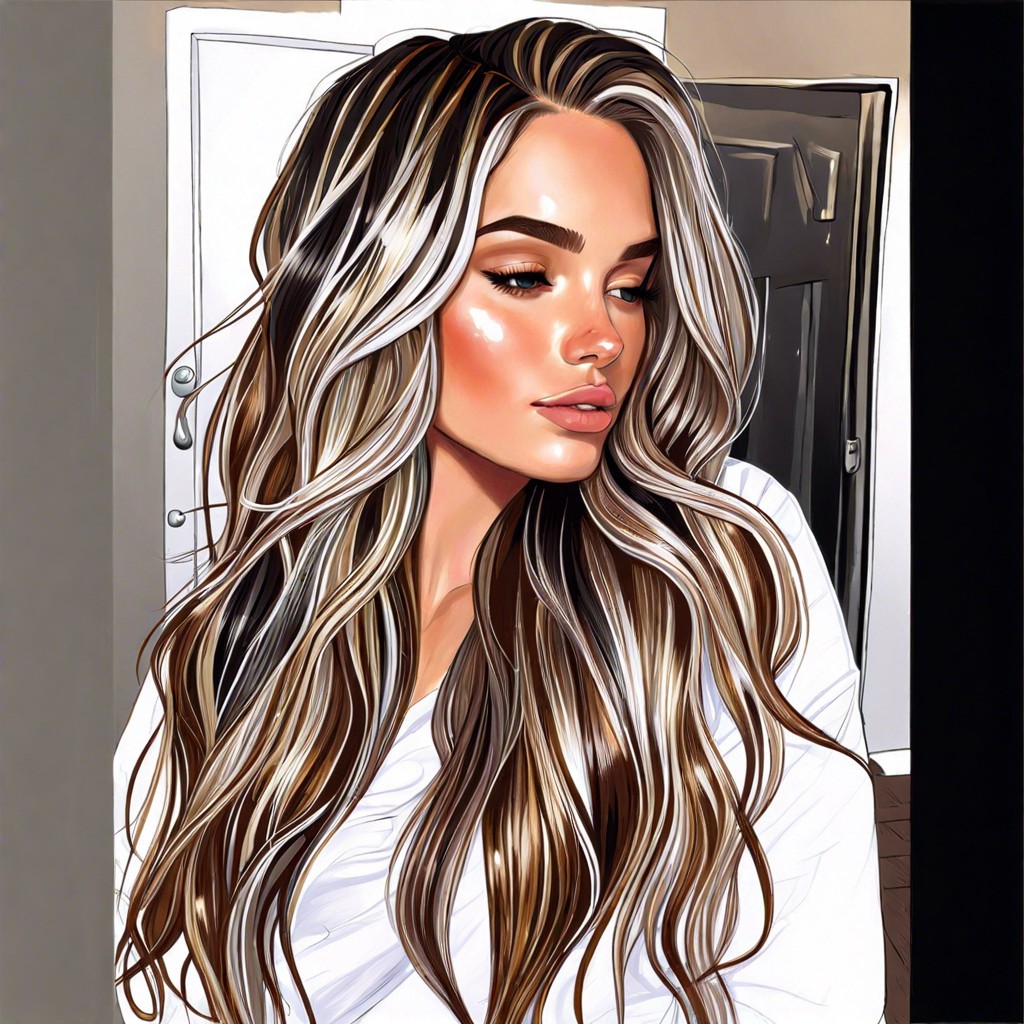
Achieving the illusion of damp tresses involves emphasizing contrast with deftly placed gleaming streaks and deep shadows. Strategically placed highlights mimic the way light dances off wet surfaces, giving strands a slick appearance. Conversely, adding darker tones amongst these reflections gives the hair dimension and the authentic look of being saturated with moisture.
Experiment With Negative Space to Suggest Hair’s Shape and Flow

Negative space defines the hair’s form without drawing each strand. By focusing on the area around the hair, the viewer’s eye fills in the missing details. This technique emphasizes the overall silhouette and movement of the hairstyle.
